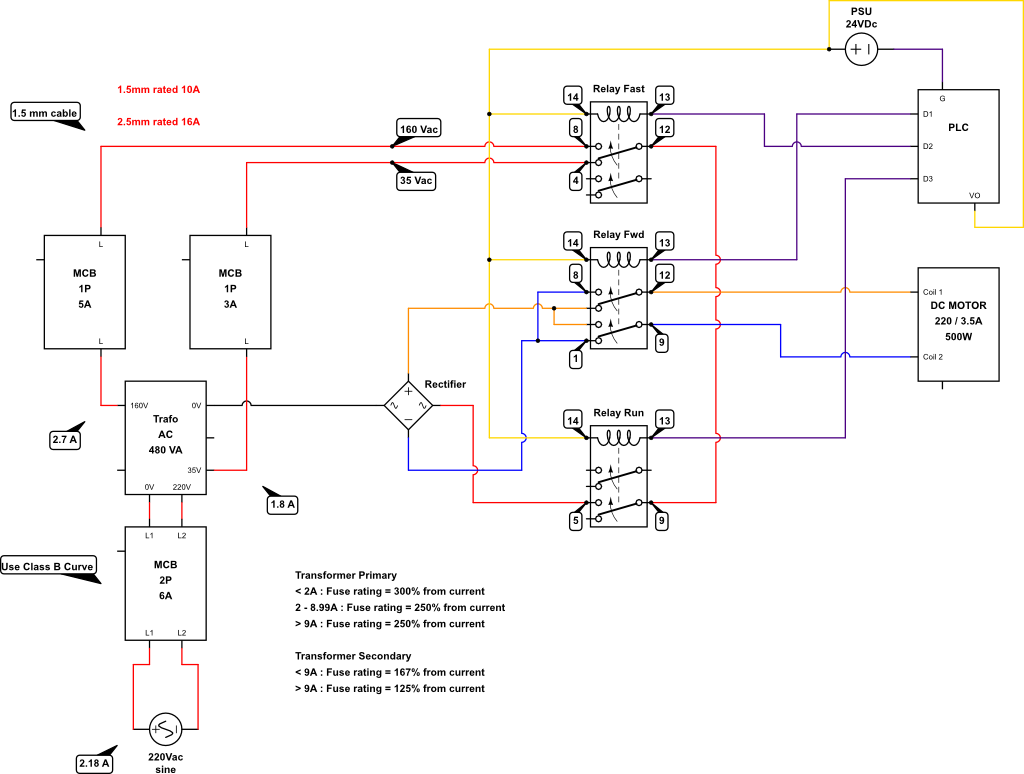I need to turn ON/OFF a 220 VDC, 500W motor as well as changing its speed and reversing direction using a PLC and 3 relays as shown in attached drawing.
I am planning to supply 160 VDC for high speed and 35 VDC for low speed using a step-down transformer combined with a rectifier.
My question lies on the relay. What relay size should I use? Although I can find relays with a 10-15 A rating, most of them are rated in AC-1 (resistive load). According to my understanding, the rating will become much lower when used for DC inductive load, especially with a higher DC voltage.
Furthermore, I can only find DC ratings up to 48 VDC at most. I can't find any relay spec for 160 VDC. The best component I found so far is ABB's AF contactor series which has DC-13 specifications.
However, I was very surprised to find that their AF09-30-10-13 series which is rated at 25A AC-1 is only rated 0.27 A in DC-13 220 VDC. I was planning to just use a large oversized relay (80 to 120 A rating @ AC-1) for driving a high-voltage DC load, but I am not sure anymore after reading the ABB's spec.
I am all ears if anyone has any suggestions.
EDIT: Actually, both Relay Fast and rmRelay Run are handling AC current as they operate before the rectifier. Therefore, only Relay Fwd is exposed to DC current as its function is to reverse the motor's direction. However, that relay will only trigger before and after motor run. So it behaves more like a railway track that switches position before the train pass.
Having this behavior, do I still need to worry about the relay's arc issue as there is no breaking involved when current is flowing? Or are there any other issues that I am unaware of? If not, is it safe to just use a standard 15 A relay rated for AC-1 for the direction relay?


